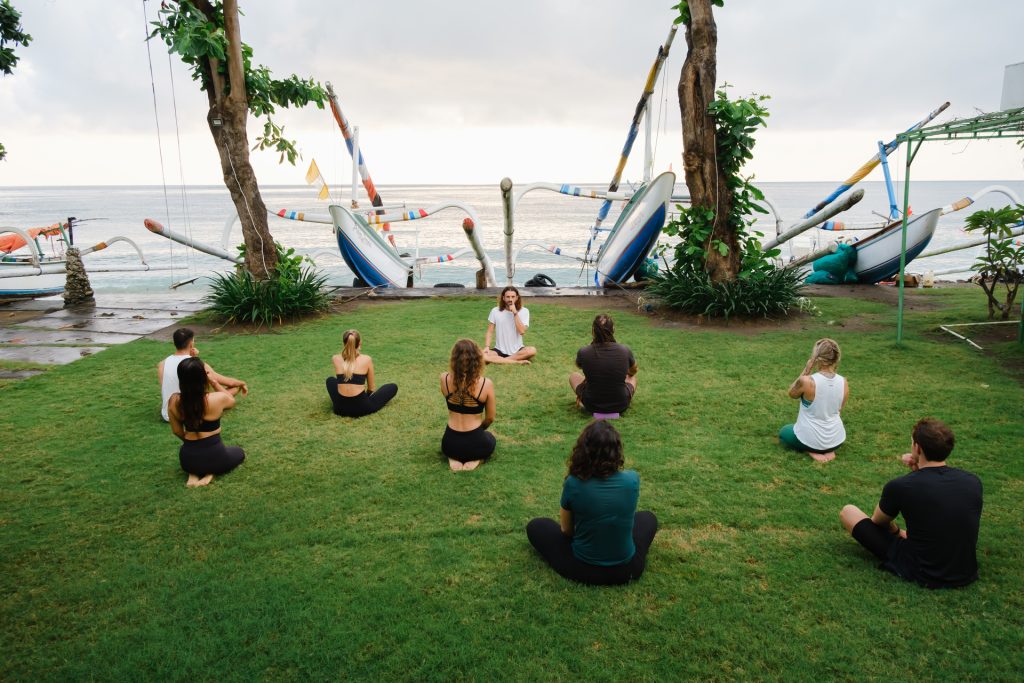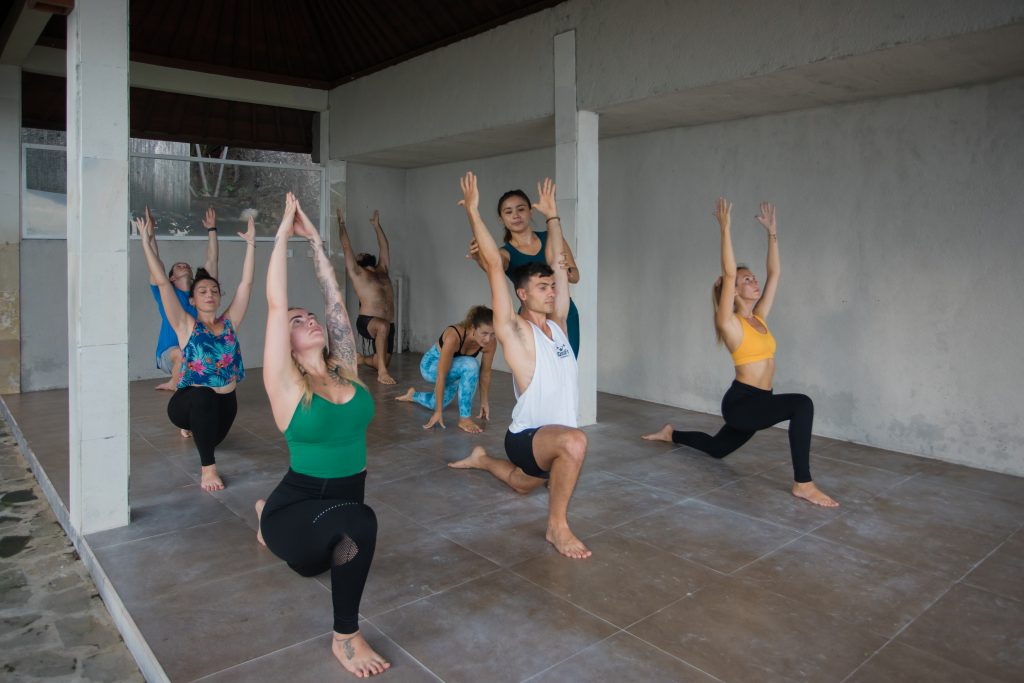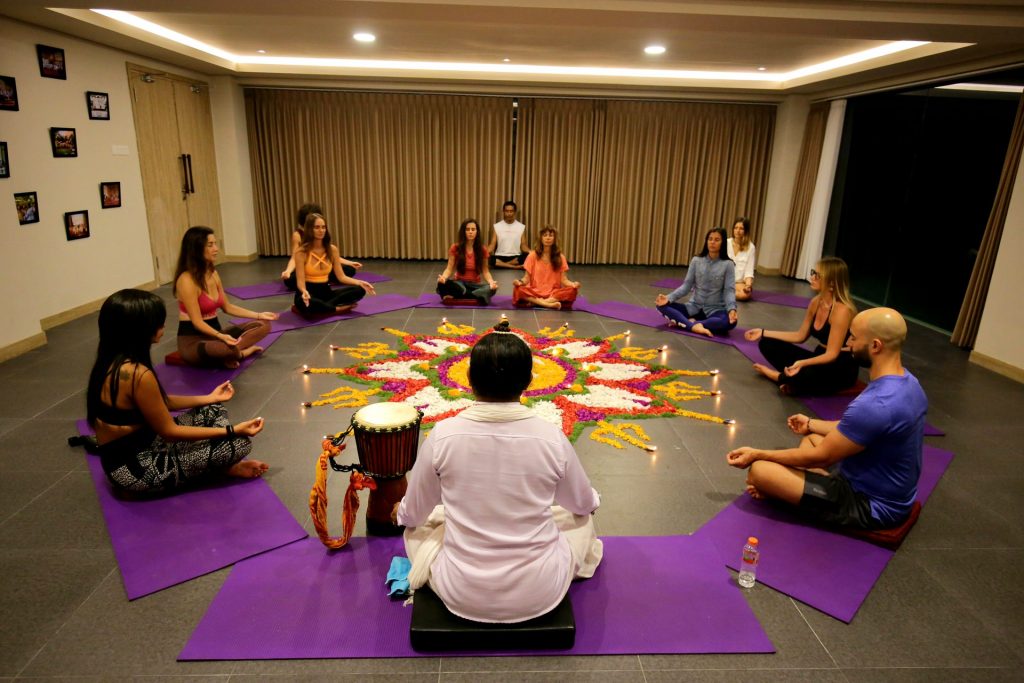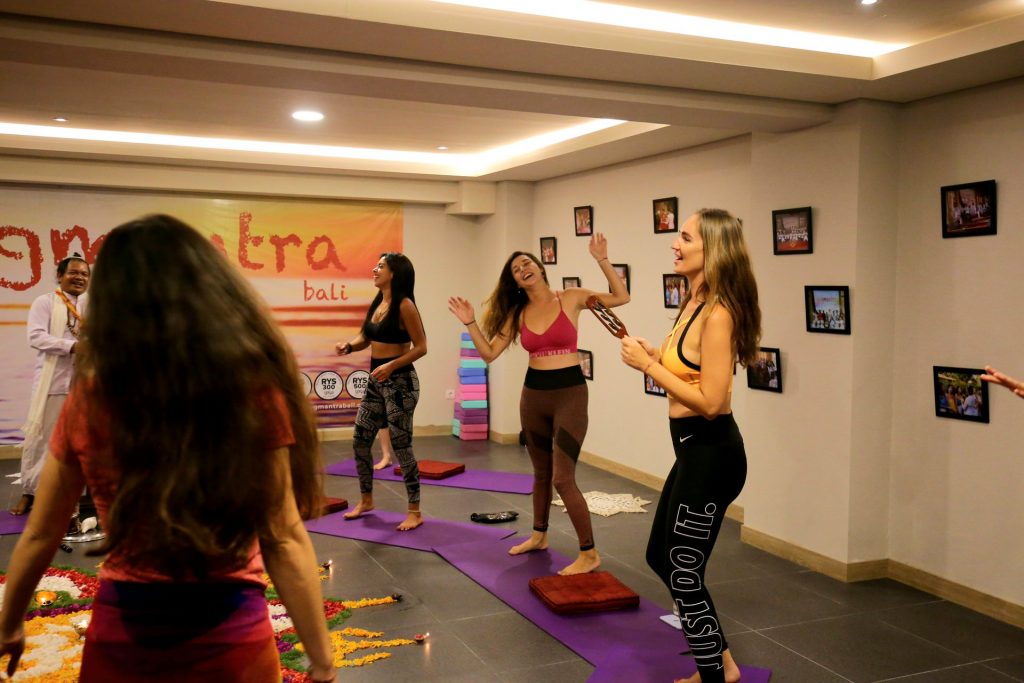Yoga is not only a series of asanas but also a path to oneself and to inner peace. While traditional teachings are exclusively important, grasping the base needs from students can enhance the experience for both teacher and learner. This looks deeper into what yoga students want their teachers to know in order that all experiences are positive and enriching.
1. Recognize Individual Differences
Everyone has their own story to tell, including yoga – and all of these stories are valid.
Yoga is not a “one-size-fits-all” type of exercise. Each student has a different body, history, and boundaries. There may be people who are quite flexible, but some may struggle with specific poses because of their limitations. It can be very useful to acknowledge these distinctions and provide modifications while teaching yoga. It is important to let your students know that they should trust what their body is telling them and also be aware of its capabilities. Offering different poses gives an opportunity for everybody to participate and feel good about themselves.
For example, forward bends may prove difficult for a person whose hamstrings are tight. Instead of insisting on going deeper into the pose, it would be more helpful to advise them to slightly bend their knees or use blocks for support. This way the student will still get all the benefits without feeling like they are not good enough or becoming frustrated. Emphasizing personal progress as opposed to comparing oneself against others fosters a sense of community where everybody is rooting for each other.

2. Create a Safe Environment
A friendly atmosphere is crucial. Learners perform best in environments where they are able to test their boundaries without the fear of being judged. This involves being able to sense the atmosphere in the classroom and resolve any unease promptly and tactfully. Safety pertains to the physical space as well as the emotional setting. Ensure that all students know they’re precious and supported – this could be achieved through a smile or nice greeting.
Also, a secure place should have no disturbances or dangers that can harm the students. A good floor, enough light, and comfortable temperatures are some of the things that contribute to this. Additionally, teachers must be ready to receive any worries from the students. Sometimes a short talk before or after a lesson might make them feel loved and guaranteed of your support.

3. Keep Instructions Clear and Simple
Yoga requires clear instructions. Particularly for new students, the use of complicated language may confuse and isolate them. Everyone stays focused and engaged with simple and direct instructions. Do not employ jargon or elaborate terms unless you are dealing with advanced students who would appreciate this. A student’s success or confusion can be caused by the timing and clarity of your cues.
Instead of “Pull your kneecaps up by engaging your quadriceps,” you could say “Straighten your legs by tightening the muscles on the front of your thighs.” This approach makes the instruction more inclusive. Use visual demonstrations and break down difficult poses into manageable parts. Students should be encouraged to seek explanations if they are unsure about something. This will help them understand better and also build their self-assurance.

4. Offer Gentle Adjustments
Adjustments should be done carefully and respectfully. Always ask for permission before helping a student physically. Verbal cues can be just as helpful and are often preferred by those who may not like being touched. Showing adjustments on yourself or using props can also help students understand how to improve their alignment or deepen a pose without feeling pressured.
For instance, in a pose like Downward Dog, instead of manually adjusting a student’s hips, you could say, “Imagine lifting your hips toward the ceiling while pressing your hands firmly into the mat.” This helps students make adjustments themselves and builds their body awareness. Always be mindful of personal boundaries and respect students’ preferences.

5. Encourage Questions and Feedback
Open dialogue improves learning. Encourage students to ask questions and share their experiences. This helps them deepen their practice and allows teachers to adjust their classes to better meet the students’ needs. Feedback goes both ways; invite students to share their thoughts on the class structure, pace, and content. This openness can build a sense of community and ensure the practice evolves to meet their needs.
Regularly check in with your students. After a class, you might ask, “How did that sequence feel for you?” or “Is there a particular pose you’d like to work on?” This shows that you value their input and are committed to their progress. Also, consider providing a suggestion box or anonymous feedback forms to allow for honest and constructive feedback.
6. Balance Tradition with Modernity
While yoga has deep traditional roots, modern adaptations can make it more accessible. Blend elements of both to create a balanced and appealing experience for all students. Understanding the history and philosophy of yoga is important, but so is recognizing the benefits of contemporary techniques and tools. This might include integrating mindfulness apps, using yoga props, or combining styles to suit today’s practitioners.
For example, incorporating restorative yoga props like bolsters and blankets can help students feel more supported in poses. Using technology to play calming music or guided meditations can enhance the practice. By respecting the traditions of yoga while also embracing modern conveniences, you make the practice more approachable and enjoyable for a broader audience.

7. Be Present and Engaged
Students notice when a teacher is fully engaged. Interacting with the class, making eye contact, and showing genuine interest in each student’s progress creates a deeper connection and enhances the experience. A teacher who is present builds trust and commitment. This presence can be shown through attentive listening, offering personalized advice, or simply being enthusiastic about the practice.
During class, circulate the room, observe your students, and offer individual tips or encouragement. After class, take a moment to chat with students, ask about their experience, and answer any questions they might have. Showing that you care about their progress and well-being can make a significant difference in their motivation and dedication.
8. Respect Personal Space and Boundaries
Respecting students’ personal space is crucial. Always be mindful of their comfort zones, especially in a shared space. This consideration builds trust and allows students to feel secure in their practice. Recognize that personal boundaries extend to verbal interactions as well. Some students may appreciate public recognition, while others may prefer private words of encouragement.
For example, some students may feel uncomfortable with physical touch or being called out in front of the class. Always ask for permission before offering hands-on adjustments, and use positive reinforcement without singling anyone out. Creating an environment where students feel safe and respected encourages them to return and engage more deeply with their practice.

9. Keep Learning and Growing
A great teacher is always a student. Continual learning and professional development keep teaching methods fresh and inspired. Share new insights and techniques with your students to keep the practice dynamic and engaging. Attend workshops, pursue certifications, and stay updated with the latest in yoga research and trends. This not only enriches your teaching but also shows students that learning is a lifelong journey.
For instance, exploring new yoga styles, learning about anatomy, or studying mindfulness techniques can provide new tools and perspectives to share with your students. By continually expanding your knowledge, you not only enhance your teaching skills but also inspire your students to keep growing in their own practice.
10. Show Patience and Kindness
Yoga is a personal journey that unfolds at its own pace. Patience and kindness from teachers can significantly influence a student’s progress and enjoyment. Celebrate small achievements and offer encouragement, creating a positive and supportive environment. Understand that each student’s journey is different, and what seems like a minor milestone to you might be a major achievement for them. A kind word or a gentle nod can go a long way in making students feel seen and appreciated.
For example, acknowledging a student’s effort to hold a challenging pose, even if it’s not perfect, can boost their confidence. Remind students that progress is not always linear and that every small step forward is valuable. By being patient and kind, you create a space where students feel comfortable to explore and grow at their own pace.
By understanding and implementing these insights, yoga teachers can create a more inclusive, supportive, and enriching experience for their students. The journey of yoga is deeply personal, and a thoughtful approach can make all the difference.
Yoga is not only a series of asanas but also a path to oneself and to inner peace. While traditional teachings are exclusively important, grasping the base needs from students can enhance the experience for both teacher and learner. This looks deeper into what yoga students want their teachers to know in order that all experiences are positive and enriching.
1. Recognize Individual Differences
Everyone has their own story to tell, including yoga – and all of these stories are valid.
Yoga is not a “one-size-fits-all” type of exercise. Each student has a different body, history, and boundaries. There may be people who are quite flexible, but some may struggle with specific poses because of their limitations. It can be very useful to acknowledge these distinctions and provide modifications while teaching yoga. It is important to let your students know that they should trust what their body is telling them and also be aware of its capabilities. Offering different poses gives an opportunity for everybody to participate and feel good about themselves.
For example, forward bends may prove difficult for a person whose hamstrings are tight. Instead of insisting on going deeper into the pose, it would be more helpful to advise them to slightly bend their knees or use blocks for support. This way the student will still get all the benefits without feeling like they are not good enough or becoming frustrated. Emphasizing personal progress as opposed to comparing oneself against others fosters a sense of community where everybody is rooting for each other.

2. Create a Safe Environment
A friendly atmosphere is crucial. Learners perform best in environments where they are able to test their boundaries without the fear of being judged. This involves being able to sense the atmosphere in the classroom and resolve any unease promptly and tactfully. Safety pertains to the physical space as well as the emotional setting. Ensure that all students know they’re precious and supported – this could be achieved through a smile or nice greeting.
Also, a secure place should have no disturbances or dangers that can harm the students. A good floor, enough light, and comfortable temperatures are some of the things that contribute to this. Additionally, teachers must be ready to receive any worries from the students. Sometimes a short talk before or after a lesson might make them feel loved and guaranteed of your support.

3. Keep Instructions Clear and Simple
Yoga requires clear instructions. Particularly for new students, the use of complicated language may confuse and isolate them. Everyone stays focused and engaged with simple and direct instructions. Do not employ jargon or elaborate terms unless you are dealing with advanced students who would appreciate this. A student’s success or confusion can be caused by the timing and clarity of your cues.
Instead of “Pull your kneecaps up by engaging your quadriceps,” you could say “Straighten your legs by tightening the muscles on the front of your thighs.” This approach makes the instruction more inclusive. Use visual demonstrations and break down difficult poses into manageable parts. Students should be encouraged to seek explanations if they are unsure about something. This will help them understand better and also build their self-assurance.

4. Offer Gentle Adjustments
Adjustments should be done carefully and respectfully. Always ask for permission before helping a student physically. Verbal cues can be just as helpful and are often preferred by those who may not like being touched. Showing adjustments on yourself or using props can also help students understand how to improve their alignment or deepen a pose without feeling pressured.
For instance, in a pose like Downward Dog, instead of manually adjusting a student’s hips, you could say, “Imagine lifting your hips toward the ceiling while pressing your hands firmly into the mat.” This helps students make adjustments themselves and builds their body awareness. Always be mindful of personal boundaries and respect students’ preferences.

5. Encourage Questions and Feedback
Open dialogue improves learning. Encourage students to ask questions and share their experiences. This helps them deepen their practice and allows teachers to adjust their classes to better meet the students’ needs. Feedback goes both ways; invite students to share their thoughts on the class structure, pace, and content. This openness can build a sense of community and ensure the practice evolves to meet their needs.
Regularly check in with your students. After a class, you might ask, “How did that sequence feel for you?” or “Is there a particular pose you’d like to work on?” This shows that you value their input and are committed to their progress. Also, consider providing a suggestion box or anonymous feedback forms to allow for honest and constructive feedback.
6. Balance Tradition with Modernity
While yoga has deep traditional roots, modern adaptations can make it more accessible. Blend elements of both to create a balanced and appealing experience for all students. Understanding the history and philosophy of yoga is important, but so is recognizing the benefits of contemporary techniques and tools. This might include integrating mindfulness apps, using yoga props, or combining styles to suit today’s practitioners.
For example, incorporating restorative yoga props like bolsters and blankets can help students feel more supported in poses. Using technology to play calming music or guided meditations can enhance the practice. By respecting the traditions of yoga while also embracing modern conveniences, you make the practice more approachable and enjoyable for a broader audience.

7. Be Present and Engaged
Students notice when a teacher is fully engaged. Interacting with the class, making eye contact, and showing genuine interest in each student’s progress creates a deeper connection and enhances the experience. A teacher who is present builds trust and commitment. This presence can be shown through attentive listening, offering personalized advice, or simply being enthusiastic about the practice.
During class, circulate the room, observe your students, and offer individual tips or encouragement. After class, take a moment to chat with students, ask about their experience, and answer any questions they might have. Showing that you care about their progress and well-being can make a significant difference in their motivation and dedication.
8. Respect Personal Space and Boundaries
Respecting students’ personal space is crucial. Always be mindful of their comfort zones, especially in a shared space. This consideration builds trust and allows students to feel secure in their practice. Recognize that personal boundaries extend to verbal interactions as well. Some students may appreciate public recognition, while others may prefer private words of encouragement.
For example, some students may feel uncomfortable with physical touch or being called out in front of the class. Always ask for permission before offering hands-on adjustments, and use positive reinforcement without singling anyone out. Creating an environment where students feel safe and respected encourages them to return and engage more deeply with their practice.

9. Keep Learning and Growing
A great teacher is always a student. Continual learning and professional development keep teaching methods fresh and inspired. Share new insights and techniques with your students to keep the practice dynamic and engaging. Attend workshops, pursue certifications, and stay updated with the latest in yoga research and trends. This not only enriches your teaching but also shows students that learning is a lifelong journey.
For instance, exploring new yoga styles, learning about anatomy, or studying mindfulness techniques can provide new tools and perspectives to share with your students. By continually expanding your knowledge, you not only enhance your teaching skills but also inspire your students to keep growing in their own practice.
10. Show Patience and Kindness
Yoga is a personal journey that unfolds at its own pace. Patience and kindness from teachers can significantly influence a student’s progress and enjoyment. Celebrate small achievements and offer encouragement, creating a positive and supportive environment. Understand that each student’s journey is different, and what seems like a minor milestone to you might be a major achievement for them. A kind word or a gentle nod can go a long way in making students feel seen and appreciated.
For example, acknowledging a student’s effort to hold a challenging pose, even if it’s not perfect, can boost their confidence. Remind students that progress is not always linear and that every small step forward is valuable. By being patient and kind, you create a space where students feel comfortable to explore and grow at their own pace.
By understanding and implementing these insights, yoga teachers can create a more inclusive, supportive, and enriching experience for their students. The journey of yoga is deeply personal, and a thoughtful approach can make all the difference.
In conclusion, yoga teachers who take these principles to heart will not only enhance their students’ experiences but also grow in their practice. Creating a supportive, engaging, and respectful environment helps students thrive both on and off the mat. This well-rounded approach to teaching yoga ensures that the practice remains a transformative journey for everyone involved.
In conclusion, yoga teachers who take these principles to heart will not only enhance their students’ experiences but also grow in their practice. Creating a supportive, engaging, and respectful environment helps students thrive both on and off the mat. This well-rounded approach to teaching yoga ensures that the practice remains a transformative journey for everyone involved.
